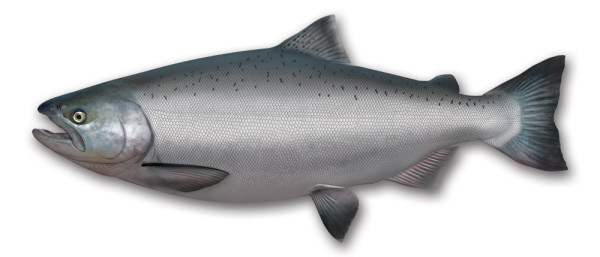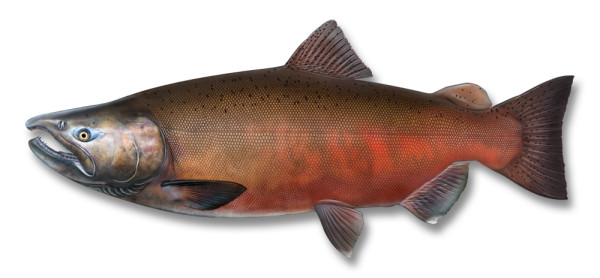Chinook salmon, also known as quinnat salmon, were successfully introduced to the South Island in 1901.
Licence Required
Chinook salmon are the largest freshwater sportsfish available to New Zealand anglers, confined to several of the larger South Island rivers. The male and female of the species have different colouring.

Female Chinook salmon

Male Chinook salmon
The Chinook salmon is the largest of the Pacific salmon species. A large salmon may attain a weight of 15 kg or more however salmon of half this weight are more common. A salmon caught in the surf or in the tidal area of a river is predominantly silver with the back being dark grey green. There are numerous small black spots on the back and on the tail. Lake stocks of salmon, commonly called “land locked salmon” exist in several South Island lakes.
Lake salmon which spend their entire life in freshwater, do not grow as big as anadromous (sea run) salmon. The spawning migration of chinook salmon usually begins in December or January and will continue through the fishing season with the peak of activity occurring about mid March.
The salmon run is a major attraction to anglers who congregate in large numbers at the river mouths. They commonly use longer and heavier spinning rods to cast the large silver spoons or wobblers which salmon strike at as they enter the river or as they journey to headwater spawning waters.
When salmon arrive at the river mouth it is an exciting and busy time. Several anglers may have salmon on their lines at one time, some are landed, some are lost but fishing for salmon during a run is certainly an unforgettable experience.